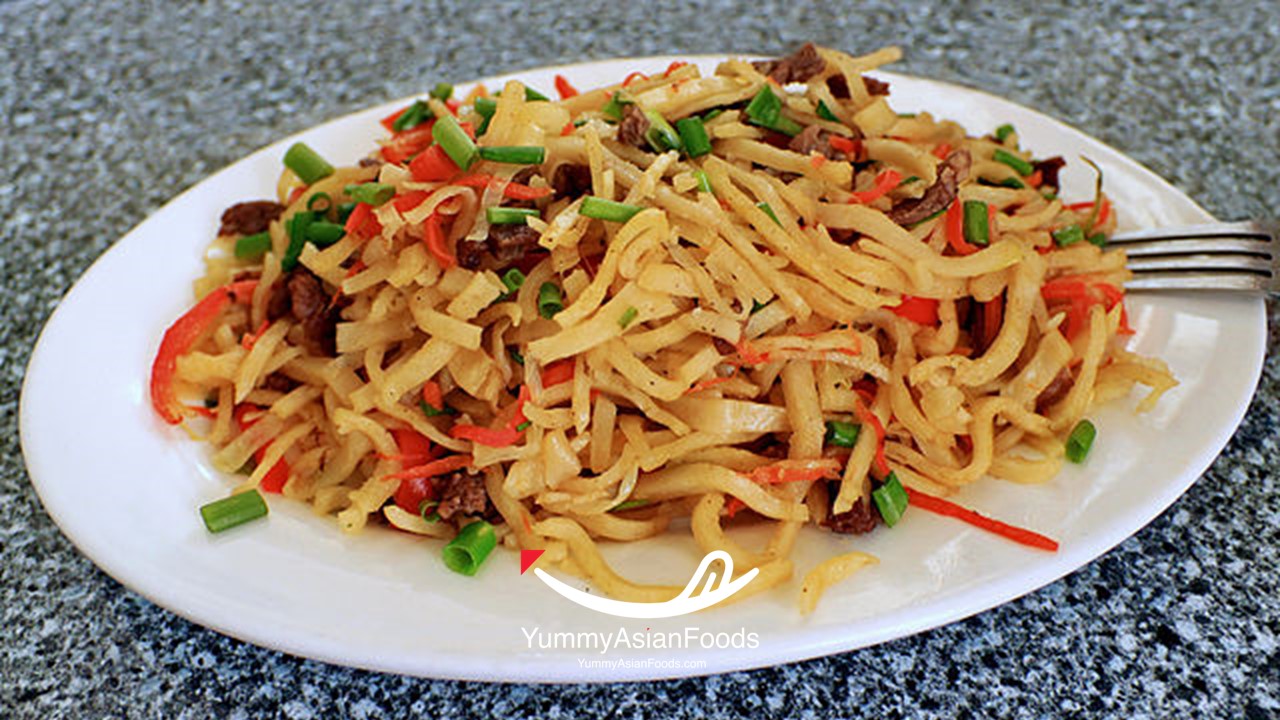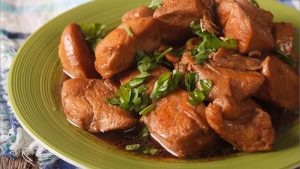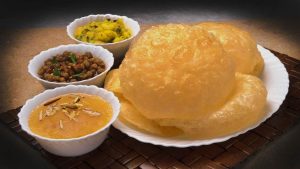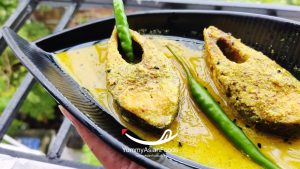Table of Contents
ToggleMongolian cuisine offers a unique blend of flavors and ingredients, and one of its most beloved dishes is Tsuivaan. This beef noodle soup is a staple in Central Asian food and is known for its delicious and comforting taste. In this blog post, we will explore a quick and easy recipe for cooking Mongolian tsuivaan.
1. Gathering Ingredients
Gathering the essential ingredients for Mongolian tsuivaan is crucial to achieving an authentic and delicious flavor. Start by selecting high-quality beef, preferably a tender cut such as sirloin or ribeye, to ensure a rich and savory taste. Fresh vegetables such as carrots, cabbage, and bell peppers are essential for adding vibrant colors and crisp textures to the dish. Additionally, choosing the right type of noodles, such as traditional Mongolian egg noodles or wheat noodles, will contribute to the overall authenticity of the Mongolian beef noodle soup. Lastly, selecting the appropriate seasonings, such as soy sauce, garlic, and ginger, will enhance the flavors and bring out the unique taste of the dish.
Highlighting the importance of using fresh and high-quality ingredients for Mongolian tsuivaan cannot be overstated. By using fresh and high-quality ingredients, the dish will not only taste better but also reflect the true essence of Mongolian cuisine. The combination of tender beef, flavorful vegetables, and authentic seasonings will create a harmonious blend of flavors that truly encapsulate the essence of Mongolian tsuivaan. Whether it’s the succulent beef, the vibrant assortment of vegetables, or the fragrant seasonings, each component plays a crucial role in delivering an authentic and delightful dining experience.

2. Cooking Process
To prepare the Mongolian tsuivaan, start by marinating thinly sliced beef in a mixture of soy sauce, garlic, and ginger for at least 30 minutes to infuse it with flavor. Meanwhile, julienne a variety of colorful vegetables such as bell peppers, carrots, and onions to add a vibrant crunch to the dish. In a separate pot, bring water to a boil and cook the noodles until they are just al dente, then drain and set aside. When the beef is ready, heat a wok or large skillet over high heat and quickly stir-fry the marinated beef until it’s seared on the outside but still tender on the inside. Remove the beef from the wok and set it aside. In the same wok, stir-fry the julienned vegetables until they are slightly softened but still retain a crisp texture. Next, add the cooked noodles to the wok along with a savory sauce made from a combination of soy sauce, oyster sauce, and a touch of sugar. Toss everything together until the noodles are well coated, and the flavors have melded together. Finally, return the seared beef to the wok and gently toss everything together to combine. The timing and technique are crucial in this process to ensure that the beef is not overcooked and the vegetables maintain their vibrant color and crunch, resulting in a perfect Mongolian beef noodle soup.
As you prepare the Mongolian tsuivaan, it’s important to pay close attention to the timing and technique to achieve the perfect texture and flavor of the dish. Marinating the beef for at least 30 minutes allows the flavors to penetrate the meat, while quickly stir-frying it over high heat ensures a tender yet caramelized exterior. The julienned vegetables should be stir-fried just until they are slightly softened, preserving their vibrant colors and crisp texture. Cooking the noodles to al dente and immediately draining them prevents them from becoming mushy, ensuring they have the ideal chewy texture in the Mongolian beef noodle soup. Combining the noodles, vegetables, and beef in the wok and tossing them together with the savory sauce allows the flavors to meld together, creating a harmonious dish. The proper timing and techniques are essential in each step of the cooking process to guarantee that the Mongolian tsuivaan is bursting with fresh flavors and has the perfect balance of textures.
3. Flavorful Seasoning
Mongolian Tsuivaan, a traditional Mongolian dish, is often seasoned with a combination of soy sauce, garlic, and ginger, which impart a rich and savory flavor to the dish. These traditional seasonings and spices are integral to the authentic taste of Mongolian Tsuivaan, as they add depth and complexity to the dish. The soy sauce contributes a salty umami flavor, while the garlic and ginger provide aromatic and slightly spicy notes, enhancing the overall taste of Mongolian Tsuivaan.
When adjusting the seasoning for Mongolian Tsuivaan to personal taste preferences, it’s important to maintain the essence of the traditional flavors while accommodating individual preferences. For those who prefer a bolder flavor, increasing the amount of soy sauce and garlic can enhance the savory profile of Mongolian beef noodle soup. Conversely, for a milder taste, reducing the amount of soy sauce and ginger can help balance the flavors without compromising the authenticity of Mongolian beef noodle soup.
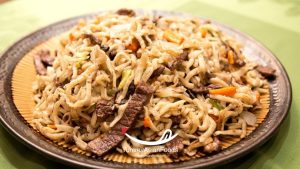
4. Serving and Enjoying
When serving Mongolian Tsuivaan, consider presenting it in traditional Mongolian bowls or on decorative plates to enhance the visual appeal. Garnishing options such as fresh cilantro, sliced green onions, or a drizzle of soy sauce can add a pop of color and flavor to the dish. Encourage your guests to savor the rich flavors of Mongolian beef noodle soup and appreciate the cultural significance of this traditional Mongolian dish, which holds a special place in the hearts and homes of many Mongolian families. The combination of tender meat, hearty vegetables, and savory seasonings in tsuivaan creates a truly satisfying culinary experience that begs to be enjoyed slowly and savored.
As you delve into the flavors of Mongolian beef noodle soup, take a moment to appreciate the cultural significance of this beloved dish. In Mongolia, Tsuivaan holds a special place in the hearts and homes of many families, often prepared for gatherings and celebrations. The rich history and tradition behind Mongolian Tsuivaan add depth to the dining experience, inviting diners to not only enjoy the delicious flavors but also to connect with the heritage and culinary customs of Mongolia. So, when you sit down to savor a steaming bowl of Mongolian beef noodle soup, take a moment to acknowledge the cultural significance and the labor of love that goes into preparing this timeless dish.
The Difference Between Chinese Meat Noodles and Mongolian Tsuivaan
Chinese meat noodles and Mongolian Tsuivaan may both be noodle dishes, but they showcase unique culinary styles that highlight the cultural differences between China and Mongolia. Chinese meat noodles typically feature a savory and rich broth with ingredients like sliced pork, beef, or chicken. In contrast, Mongolian Tsuivaan is known for its simplicity and focus on stir-fried noodles mixed with various vegetables, often mutton or lamb.
One key difference lies in the flavors: while Chinese meat noodles tend to rely on complex seasoning and bold spices, Mongolian Tsuivaan leans towards a more subtle taste profile, accentuating the natural flavors of the ingredients. Another distinction is in their cooking techniques; Chinese meat noodles are often simmered for hours to develop deep flavors in the broth. Mongolian Tsuivaan is quickly stir-fried at high heat to maintain the freshness of the vegetables and meats. Exploring these nuances can offer not just a culinary experience but also a glimpse into the diverse food cultures across East Asia.
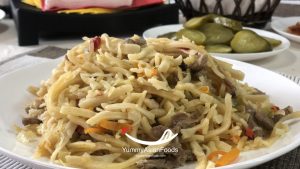
Final Words: How to Cook Mongolian Tsuivaan
By following these simple steps, anyone can delight in the delightful experience of cooking and enjoying Mongolian tsuivaan. Embracing the flavors of Mongolian cuisine allows us to appreciate the rich culinary traditions of Central Asian food and the comforting appeal of beef noodle soup. Try this recipe at home and savor the authentic taste of Tsuivaan!


